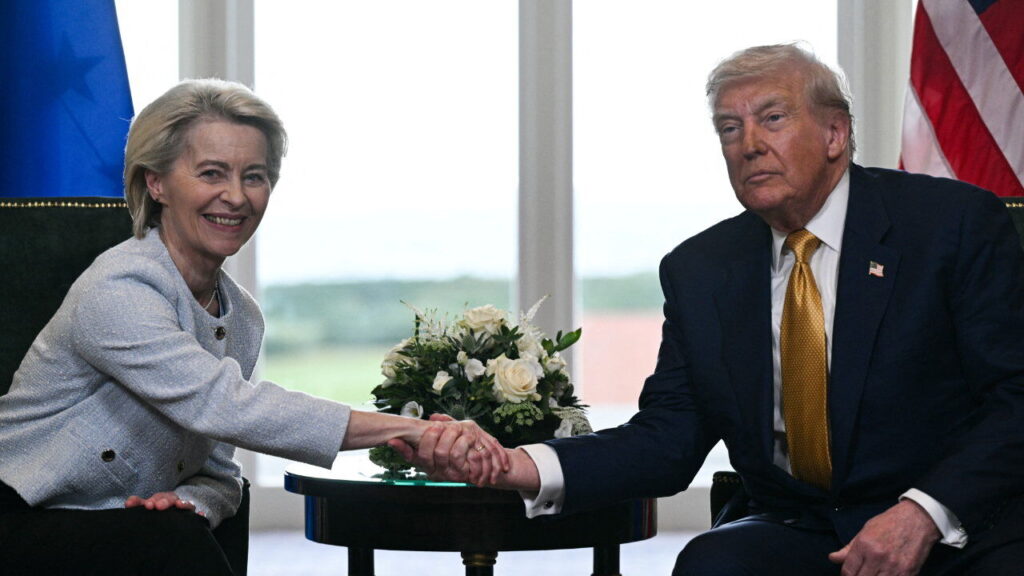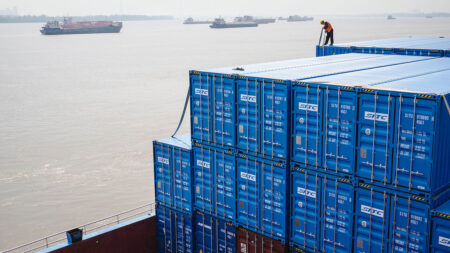Ever since President Donald Trump announced his Liberation Day tariffs in April, the dynamics of the world’s largest trading relationship have been severely strained. This sudden implementation of tariffs sent shockwaves through international markets and strained economic ties between the United States and the European Union. The EU’s initial strategy involved a mix of diplomacy and negotiation; they attempted to charm the American administration into reconsidering its stance on trade. However, this approach soon gave way to a more contentious tone, with the European bloc threatening retaliatory measures in response to the tariffs.
The growing tension reached a crucial point on July 27th, when negotiations took a positive turn. At a golf course located in Scotland—a fitting backdrop for a high-stakes meeting—President Trump and Ursula von der Leyen, the President of the European Commission, came together to unveil the framework of a preliminary trade agreement. This development was significant, as it illustrated a mutual willingness to re-establish economic dialogue and collaboration.
What made this agreement particularly noteworthy was the delicate balancing act that the European Union managed to execute. The bloc had to navigate through a complex landscape of international politics and trade economics. On one hand, they were required to make a series of concessions to appease Trump and his administration, who were determined to assert American interests in global trade. On the other hand, the EU had to safeguard its economic integrity and prevent severe repercussions that could arise from escalating trade tensions.
This agreement, albeit preliminary, was an essential step towards stabilizing relations between the two economic powerhouses. The details of the proposals included discussions on tariffs, regulatory alignments, and areas of mutual benefit such as technology, agriculture, and environmental standards. Both parties recognized that a trade war could have devastating consequences, not only for their economies but for the global market as a whole.
As this development unfolds, analysts and political observers are keeping a close eye on the reactions within both the U.S. and European landscapes. There exists an array of stakeholders and interest groups, each with their own agendas and concerns regarding the implications of such trade agreements. The agricultural sector, for instance, may be particularly attentive to any concessions that might affect farming subsidies or imports. Similarly, industries concerned with technology and innovation will have a vested interest in how regulations might be harmonized to benefit cross-border cooperation.
The success of this agreement will hinge on the ability of both leaders to rally support and navigate the often turbulent waters of their political backrooms. In the U.S., Trump’s base often espouses a protectionist agenda that could be at odds with more open trade policies, while in Europe, various countries possess divergent interests that could complicate the collective stance of the EU.
Moreover, the timing of this announcement suggests a tactical approach by both leaders. With national elections looming, demonstrating a commitment to economic stability and benefits from international trade can be a critical factor in garnering public support. This agreement may very well be positioned as a win for Trump, one that can be marketed as a triumph of his presidency, while von der Leyen can point to the negotiations as a success for European unity and strategy.
In summary, the preliminary trade agreement initiated by Trump and von der Leyen signals a possible thawing in relations between the U.S. and the EU. While it remains to be seen how these negotiations will develop further, the initial framework suggests a mutual desire to avoid conflict and to seek solutions that benefit both parties. Experts will be monitoring future meetings and decision-making processes closely to understand the long-term implications of this pivotal moment in international trade relations.









